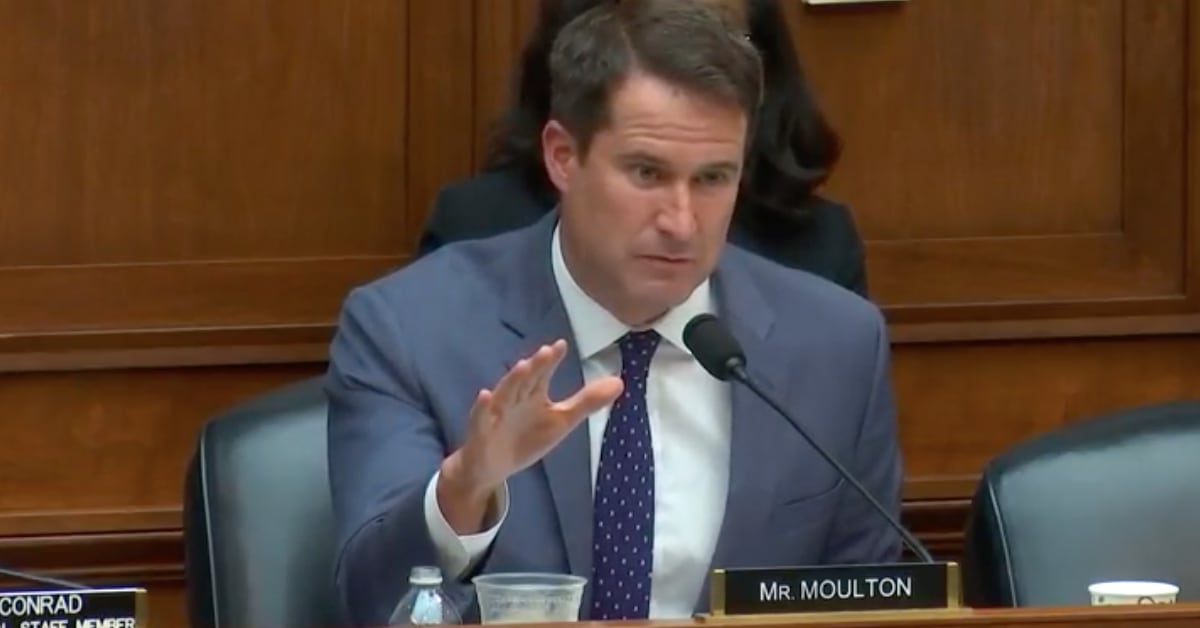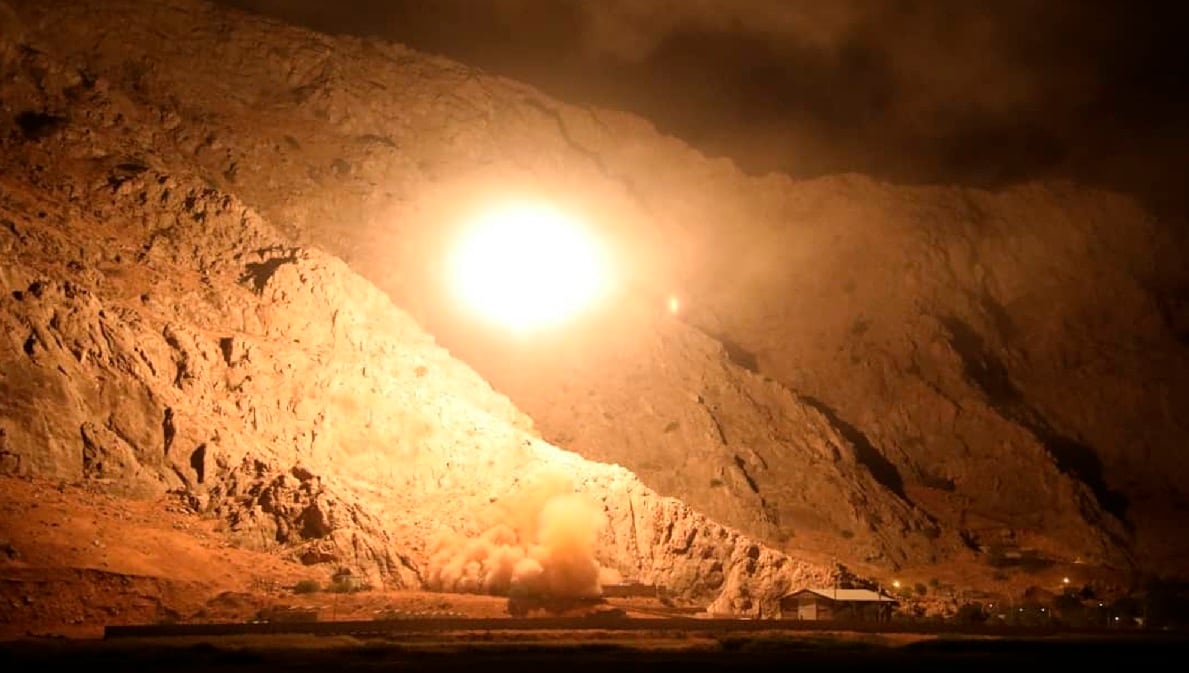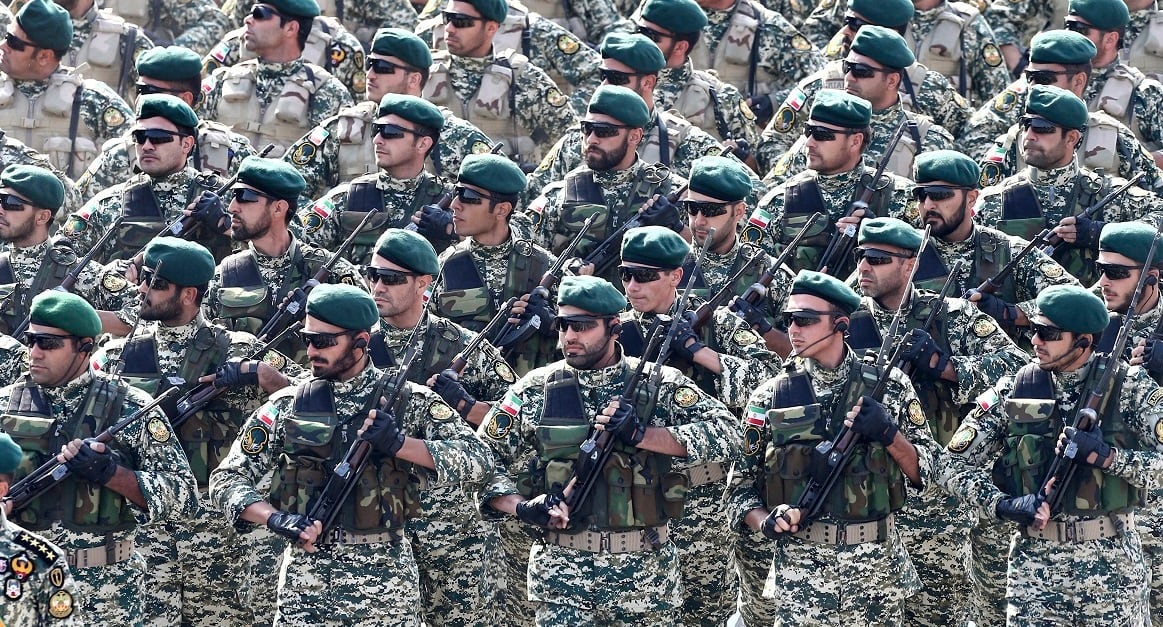This report has been updated since it was originally published.
Iranian forces launched ballistic missiles targeting Syrian militants early Monday, an attack that potentially put coalition forces at risk, a Pentagon official said.
A ballistic missile fired by Iranian forces hit an area where U.S. troops and Syrian Democratic Forces are clearing remnants of Islamic State forces out of the Middle Euphrates River Valley.
The Iranian strike in the MERV was confirmed Monday by Cmdr. Sean Robertson, a Pentagon spokesman, in an email to Military Times, who called it “reckless” and “escalatory.”
The launch of missiles and drone bombers was targeting militants Tehran blames for the recent attack on a military parade in Ahvaz, Iran, according to news reports.
The strike was a threat to coalition and Syrian forces operating in the area, Robertson said.
“While no Coalition forces were harmed, we are still assessing the strike and given the complex nature of the battlespace, such strikes potentially jeopardize the forces who are actively fighting ISIS in Syria,” Robertson told Military Times. “Firing any missiles through uncoordinated airspace is a threat to civil and military aviation.”
The Iranian forces failed to conduct the operations responsibly, he said.
“Professional militaries, such as the Coalition and the Russian Federation, de-conflict their operations to ensure maximum safety; Iran took no such measures,” Robertson said. “Any Iranian activity in this area is reckless, unsafe and escalatory.”
RELATED

Iran’s Revolutionary Guard launched six ballistic missiles and drone bombers Monday while also threatening regional adversaries as Tehran’s nuclear deal with world powers unravels, the Associated Press reported.
The missiles had enough range to strike regional U.S. military bases and targets inside both Saudi Arabia and the United Arab Emirates.
Iran's supreme leader has called out the two Arab nations by name, accusing them of being behind the Sept. 22 attack on the parade in the Iranian city of Ahvaz, something denied by both Riyadh and Abu Dhabi.
Monday’s strike was the second missile attack by Iran in a month, and came as tensions rise ahead of renewed U.S. sanctions targeting Tehran’s oil industry that will take effect in early November.
Iranian state TV and the state-run IRNA news agency said the missiles “killed and wounded” militants in Syria, without elaborating. The missiles, launched from western Iran, flew over Iraq and landed near the city of Boukamal in the far southeast of Syria, they reported.
“Terrorists used bullets in Ahvaz,” Gen. Amir Ali Hajizadeh, chief of the Guard’s aerospace division, told the semi-official Tasnim news agency. “We answered them with missiles.”

The Guard, a paramilitary group that answers directly to the supreme leader, said it followed the missiles with bombing runs by seven remotely piloted drones, a first for Iran. State TV aired footage of a drone dropping what appeared to be an unguided munition.
Boukamal is held by Syrian government forces, but ISIS still maintains a presence in the area, despite being driven from virtually all the territory it once held in Syria and Iraq.
Rami Abdurrahman, who heads the Britain-based Syrian Observatory for Human Rights, told The Associated Press that the Iranian missiles hit the ISIS-held town of Hajin, just north of Boukamal.
The U.S. military's Central Command acknowledged that Iranian forces conducted "no-notice strikes" in the area.
RELATED

The missile launch further adds to confusion over who carried out the assault on a military parade, which killed at least 24 people and wounded over 60.
Iran initially blamed Arab separatists for the attack in which gunmen disguised as soldiers opened fire on the crowd and officials watching the parade from a viewing platform. The Arab separatists, who have long complained of discrimination in Persian-majority Iran, claimed the attack and provided accurate details about one of the attackers.
The Islamic State group also claimed responsibility for the Ahvaz assault, but initially made factually incorrect claims about it. Later, ISIS released footage of several men that Iran ultimately identified as attackers, though the men in the footage are not known to have pledged allegiance to the extremist group.
In announcing the launch, Iranian state media said the missiles targeted both “takfiri” militants — a term it often applies to the Islamic State group — and Ahvazi separatists. The separatists have not been known to work with ISIS in the past.
Mohsen Rezaei, who formerly led the Guard, praised the missile strike on Twitter, adding that the "main punishment is on the way," suggesting more attacks could be imminent.
The semi-official Fars news agency, believed to be close to the Guard, identified the six missiles used as Zolfaghar and Qiam variants, which have ranges of 750 kilometers (465 miles) and 800 kilometers (500 miles) respectively. Those missiles can reach Emirati and Saudi targets, as well as U.S. bases.
Regional tensions have been mounting since President Donald Trump pulled America out of Iran's nuclear deal with world powers in May. The United Nations says Iran still honors the terms of the accord, in which it limited its enrichment of uranium in exchange for the lifting of economic sanctions.
This is the third time in about a year that Iran has fired ballistic missiles beyond its borders.
The Associated Press contributed to this report.
Kyle Rempfer was an editor and reporter who has covered combat operations, criminal cases, foreign military assistance and training accidents. Before entering journalism, Kyle served in U.S. Air Force Special Tactics and deployed in 2014 to Paktika Province, Afghanistan, and Baghdad, Iraq.
